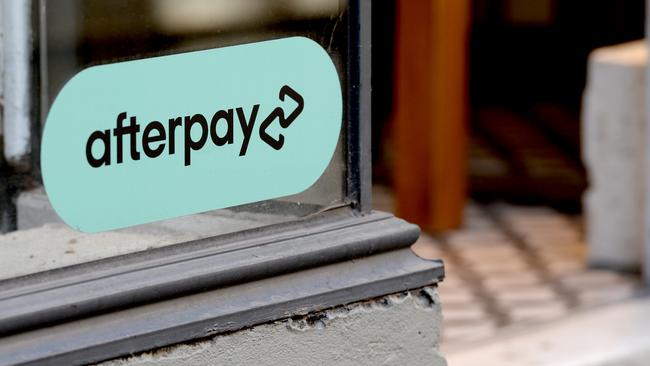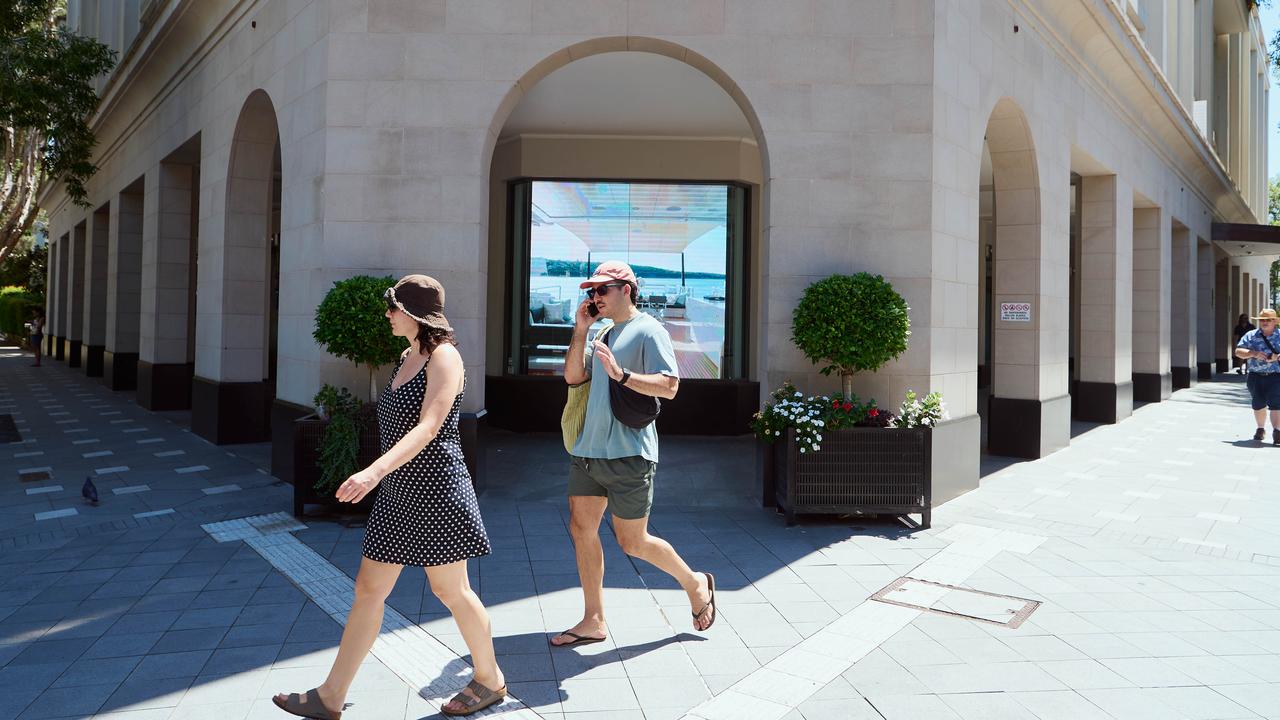Brokerage UBS warns Afterpay’s growth rate to fall sharply
The prospect of slowing growth comes as competition in the fast-growing industry heats up, with global giant PayPal the latest to muscle in on the home player’s turf.

Afterpay is reaching maturity in Australia and is staring down a substantial drop in its growth rate by the end of the year, brokerage UBS has warned.
The prospect of slowing growth comes as competition in the fast-growing industry heats up, with global giant PayPal the latest to muscle in on the home player’s turf, putting the spotlight on Afterpay’s margins.
UBS buy now, pay later analyst Tom Beadle has laid out two potential avenues he sees for the BNPL operator, as he questioned ‘how big Afterpay can really get’ in the light of rising competition.
“Do they want to get really big and do $300bn, $400bn or $500bn in volumes per year? (To do that) they’ll need to cut their merchant fees and margins.
“Or do they become a relatively niche player, doing $100bn dollars a year in six or eight years time, with about $1bn in annual profit.”
UBS has been a long term bear on Afterpay, with a price target of $37 a share and a “sell” rating on the stock and a more sober view of the growth of the sector. This compares to the near $100 a share Afterpay currently trades.
Mr Beadle’s view is those forward numbers don’t justify a market cap of $30bn in six or eight years’ time, let alone today.
The entry of more players into the market will also mean closer scrutiny of Afterpay’s margins and the ‘no surcharge rules’ that restrict merchants from passing on the costs of providing buy now, pay later services to customers.
Afterpay’s merchant margin currently sits at around 4 per cent, while its transaction margin of 2.2 per cent is well above Paypal’s 1.3 per cent.
Afterpay’s success and unit economics were always going to attract competition, Mr Beadle warned.
“If Afterpay‘s economics hold as it scales, we think it is possible for Afterpay to generate a return on equity of 55 per cent plus.
“Given the barriers to entry are low and Afterpay’s product is relatively easy to replicate, we have always seen a downside risk of competition eroding such returns.”
The ‘inevitable’ banning of the ‘no surcharge rules’ is another headwind. When it eventually happens, it will impact Afterpay’s top line, Mr Beadle warned.
Afterpay’s merchant income in the first half of the year was the equivalent of 15 per cent of all debit card transaction costs, Mr Beadle’s figures show. This is despite it accounting for just 1.8 per cent of all debit volumes over the period.
“Consumers are presented with Afterpay as being a free product when in reality its systemic cost is at least eight times that of an equivalent debit card transaction. The cost is either embedded within the underlying purchase price or the merchant makes a lower margin.
“I fail to see where the public interest is (in retaining the no surcharge rules).”
On the outlook for growth in Australia, he pointed to Afterpay’s declining share of volumes.
“Afterpay’s share of volumes fell from 1.19 per cent in the second quarter to 1.04 per cent in the third quarter.
“We think this is increasing evidence of Afterpay’s maturity in Australia, which could result in a significant drop in its rate of growth towards the end of calendar year 2021,” he warned, while acknowledging there may be an element of timing or seasonality affecting the numbers.”
The BNPL sector has been growing at a much faster pace than traditional card services in recent years, but they still make up just a fraction of the overall market
Afterpay and Zip’s volumes equated to 0.07 per cent of card spend in the first half of 2017 versus 1.52 per cent in the first six months of this year.
Total card spending volumes, meanwhile, are now above pre-Covid levels, though credit card volumes were hit by the Covid-19 pandemic, dropping 11 per cent in 2020 on reduced international volumes. Domestic credit card spending since November has been around pre-COVID levels, Mr Beadle said.
The competition angle is significant for credit card disruptor Zip as well, he said. Zip’s US product, Quadpay Anywhere, uses a virtual credit card, with Zip charging consumers $1 per instalment fee, giving it a more lucrative total take rate.
“If a product like Commonwealth Bank’s Pay-in-4 comes into the US, the consumer proposition for Zip’s Quadpay Anywhere product will be challenging. Consumers aren’t going to pay $1 per instalment if there‘s a free alternative.”
UBS does see significant runway for Zip to continue to grow and disrupt credit cards, but “it will be capital intensive for them”, Mr Beadle warned.
Afterpay shares finished Wednesday’s trade at $98.84.



